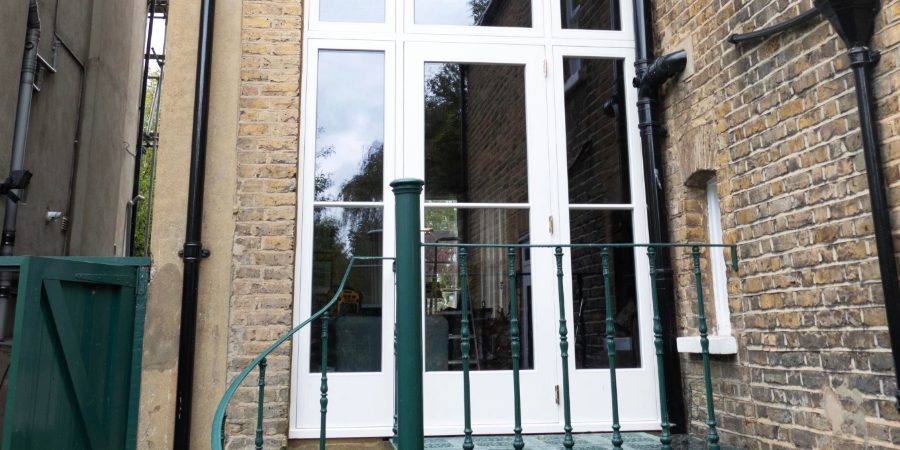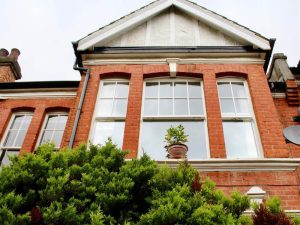Many homeowners, particularly those who have never owned or rented a listed property, may ask themselves, do I need permission to modernise my heritage property? Hence, we have created this informative guide to assist such homeowners in finding the answer. This guide is structured to provide a comprehensive understanding of the regulations and requirements for modernising listed buildings.
Listed buildings are classified into three categories as follows:
- Grade I: These buildings are not just fascinating; they are rare gems in the architectural landscape, with only 2.5% of listed buildings achieving this prestigious status. As a homeowner of a Grade I building, you hold a unique privilege and a significant responsibility to preserve its historical integrity
- Grade 2*: These buildings are substantial and of more than particular interest; 5.8% of listed buildings are Grade 2*
- Grade 2: Buildings of particular architectural or historic interest. 91.7% of listed buildings are Grade 2
The total number of listed buildings has yet to be discovered. However, it is estimated that around 500,000 listed buildings are on the National Heritage List for England (NHLE), an excellent place to check whether your home is listed. This article will focus its attention on Grade 2 Listed Buildings.
So, can you change your Listed building without permission?
Sorry to be the bearer of bad news, but… no major work should be carried out without permission; you would need Listed Building Consent from the local planning authority. We also recommend getting planning permission along with your listed building consent if your property is in a conservation area.
Planning permission for houses in conservation areas
Conservation Areas are city sections designated by the council due to their specific architectural or historical significance.
If your property is situated within a conservation area but is not a Listed Building, obtaining Planning Permission is necessary for any changes to windows or doors. If the property is within a conservation area and a Listed Building, both Listed Building Consent and Planning Permission are required. Separate applications must be submitted for each, regardless of whether the property is old or modern.
If your building is in a conservation area, seeking guidance from your local planning authority before installing is essential. In some conservation areas, specific controls, known as ‘Article 4 Directions’, protect particular building features like doors or windows. These controls may restrict specific work that would typically not require planning permission, such as replacing a window with a similar design. Click to find out if an Article 4 Direction applies to your conservation area, or contact your local authority. They should be able to advise on the types of work that will necessitate planning permission.
Planning Permission is a separate requirement necessary for exterior alterations to many homes, whether listed or not. While some alterations fall under Permitted Development Rights, seeking advice from your local authority before commencing any changes is prudent. If both Planning Permission and Listed Building Consent are necessary, applying for them simultaneously usually expedites the process.
Let’s define a Grade 2 listed building.
Minor repairs and maintenance could be excluded from the list of building consent requirements. For example, you may not need permission to repaint your kitchen. But if you do anything seen as a ‘material change,’ you will need consent, and who wants to risk making any changes without permission? The uncertainties about what requires consent and what doesn’t can be challenging.
You’re probably aware that a Grade 2 listed building is a property of particular architectural or historical interest to a local area. Its architectural features are identified as a critical part of our heritage, so they receive special protection. These buildings have been placed on the National Heritage List for England (NHLE).
Considering alterations to a listed building
Understanding the legal requirements for changing a listed building can be perplexing. Questions like, “Do I need Planning Permission, Listed Building Consent, or both?” can swirl in your head. Here is a breakdown of the regulations. So, you’ve acquired a listed building that requires some revamping to transform into the ideal home. You could extend the back for a stylish kitchen/diner, remove an unsightly lean-to, change the windows, or design and install a new front door. Sounds straightforward, right?
Well, not quite. Whether your property is listed or not, pertinent laws govern planning works. These laws safeguard homeowners, communities, and buildings of significant architectural or historical value. So, before doing any work, you must obtain listed building consent from your local authority to alter a listed building. This consent applies to exterior and interior modifications that could impact the property’s character or appearance as a structure of particular architectural or historical importance.
While minor alterations like adding a roof light or changing wallpaper may seem insignificant, they can significantly influence the building’s particular interest and thus require consent. Your local planning authority determines whether such changes affect your property’s interest.
Listed Building Consent doesn’t hinder modernising your home but ensures alterations align with the building’s original character. Typically, consents are granted, yielding commendable outcomes for the property and the homeowner.
When does Listed Building Consent Come into Play?
Owning a listed building is a commendable responsibility. It marks you as the custodian of a significant piece of history, akin to curating a living museum. While your home is meant to be enjoyed like any other, this privilege comes with notable duties, similar to safeguarding a precious artefact; this is where Listed Building Consent comes into play.
Listed Building Consent is not just a legal requirement; it’s a crucial tool for protecting and preserving your building’s historical significance. It encompasses the exterior and interior, ensuring that any alterations or repair work maintains the building’s historic character.
Understanding which works necessitate Listed Building Consent is crucial:
- Repair Work: Routine maintenance and minor like-for-like repairs typically don’t require consent. However, alterations or complete replacements of historic fabric or features that affect the building’s character mandate consent
- Painting and Decorating: Internal painting and decorating usually don’t require Listed Building Consent unless they impact a historic decorative scheme. External painting may require consent as it could influence the building’s character
- Window and Door Replacement: Internal alterations, such as removing historic doors or plasterwork or replacing external doors or windows, demand listed building consent
- Bathroom and Kitchen Fittings: Replacing modern fittings generally doesn’t require consent. However, consent is necessary to replace surviving historic fittings
- Emergency Work: Emergency repairs can be conducted without prior safety, health, or preservation consent. However, detailed justification must be provided afterwards
The consequences of unauthorised works on listed buildings are not to be taken lightly. Altering or demolishing without consent can lead to hefty fines or even imprisonment. Only in cases of essential public safety concerns can a demolition be justified, subject to a Dangerous Structure Notice from the Council. This underscores the seriousness of the regulations and the need for strict compliance.
If you are still determining the need for Listed Building Consent, consult your local planning office or visit the National Heritage List of England for guidance. Navigating these regulations diligently is essential to upholding the integrity of our architectural heritage.
In conclusion, making changes to your Grade 2 listed building requires careful consideration, adherence to regulations, and a commitment to preserving historical integrity. We recognise this delicate balance and offer services aligned with conservation principles. Through navigating challenges and embracing opportunities for change, property owners can contribute to the longevity and relevance of these cherished heritage structures. If you need more clarification on modernising your Grade 2 listed building, we encourage you to seek professional advice to ensure you’re making informed decisions.
At Wandsworth Sash Windows, our dedication to change while honouring tradition reflects our vision of seamlessly blending the past with the future. We strive to preserve the distinctive character of Grade 2 listed buildings, establishing ourselves as a reliable partner for property owners navigating the intricacies of exterior alterations. If you’re considering your next project involving a listed building, we invite you to contact us for a discussion.


